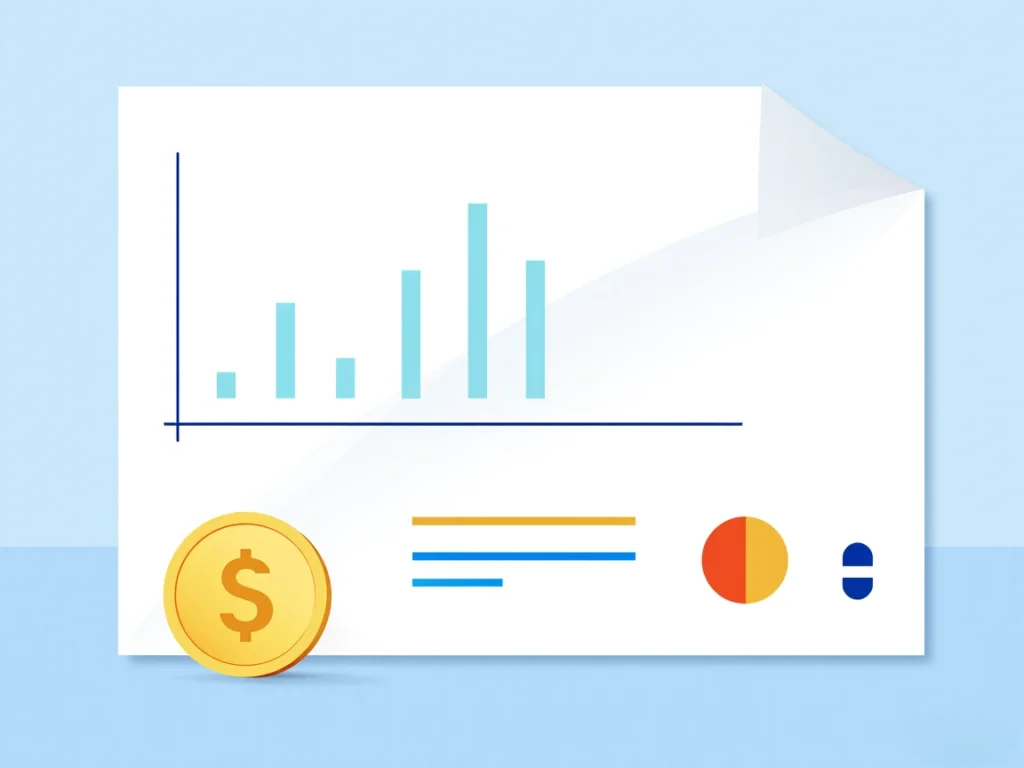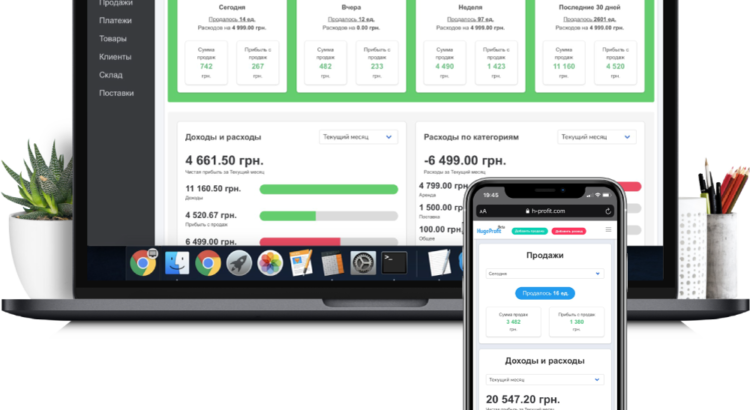How to Start Your Own Business from Scratch: A Step-by-Step Guide for Beginners
Starting your own business is not just a step towards financial independence but also an opportunity to bring your ideas to life and work for yourself. However, the path of an entrepreneur is not always easy. Many beginners and inexperienced entrepreneurs face challenges right from the start. Some don’t know where to begin, while others misjudge the market or choose an unsuccessful niche.
To avoid common mistakes, it is crucial to prepare thoroughly before launching your business—analyzing competitors, assessing demand, developing a business strategy, and identifying sources of funding. Most failures happen due to the lack of a clear plan. Therefore, before starting your own business, you should carefully think through each step—from choosing an idea to organizing your first sales.
In this article, we will outline a step-by-step business plan to help beginners avoid typical mistakes and successfully launch their business.
Defining Your Business Idea: What to Sell and to Whom?
Choosing the right business niche is the foundation of a successful startup. It is essential to find a balance between what interests you and what is in high demand in the market. Mistakes at this stage can lead to a lack of customers and financial losses. Therefore, before starting your business, conduct an in-depth analysis of your niche and the market as a whole.
But how do you choose a profitable niche? To minimize risks when selecting a product or service, follow this approach:
- Analyze the market – Check trends on Google Trends, research popular categories on marketplaces, and explore social media and forums.
- Assess competitors – Study their strengths and weaknesses, pricing strategies, product range, and customer feedback.
- Evaluate profitability – Calculate costs for procurement, storage, and advertising to determine if your business will be profitable.
- Assess your capabilities – Do you have any knowledge, contacts, or access to unique products that could give you a competitive advantage?
Once you have analyzed the market and identified high-demand products or services, conduct a SWOT analysis. This strategic tool helps assess both internal and external factors affecting your business idea. A SWOT analysis consists of four key aspects:
- Strengths – Competitive advantages of your product or service.
- Weaknesses – Areas where your product or service may be lacking.
- Opportunities – External factors that provide growth potential.
- Threats – Risks that could negatively impact sales.
Performing a SWOT analysis allows you to strategically plan your business launch and development. For example, if you plan to open a HoReCa business, such as a coffee shop, a SWOT analysis can help you evaluate the market, assess competitors, and successfully launch your business in an area where there is a demand for quality coffee shops.може вам оцінити ринок та конкурентів і запустити бізнес з 0 у конкретному районі міста, де не вистачає кав’ярень зі смачною кавою.
Business Plan: Why It’s Important and How to Create One?

Many entrepreneurs neglect writing a business plan, considering it an unnecessary formality. However, a business plan helps prevent financial mistakes and defines a clear strategy for business growth. If you want to start a business from scratch and manage it effectively, you need a well-structured action plan.
What Should a Business Plan Include?
A solid business plan consists of the following sections:
- Business idea description – What you are selling and what problem your product solves.
- Market analysis – Who are your competitors, and what is the current situation in your chosen niche?
Target audience – A detailed profile of your ideal customer. - Marketing strategy – How you plan to attract and retain customers.
- Financial plan – Calculation of startup capital, estimated expenses, and revenue forecast.
- Operational plan – Resources required for launch (premises, equipment, staff).
Pay special attention to calculating startup capital and expenses to avoid unexpected financial difficulties. Key calculations include:
- Initial expenses – Business registration, inventory purchase, rent, advertising, software (e.g., store management software).
- Operational costs – Taxes, employee salaries, logistics.
- Projected profit.
Additionally, to efficiently manage your business, you may also need a simple CRM system for sales tracking.
Legal Business Registration
Legal business registration marks the official start of your entrepreneurial journey. Choosing the right legal structure and taxation system will help you avoid legal issues and optimize costs. In Ukraine, there are two official forms of registration for small and medium-sized businesses:
- Sole Proprietor (FOP – Фізична особа-підприємець) – A simple option for individual entrepreneurs and small businesses.
- Limited Liability Company (LLC – ТОВ, Товариство з обмеженою відповідальністю) – Suitable for partnerships or larger-scale operations.
Once you have chosen your registration form, the next step is selecting a taxation system. You can opt for one of the following:
- Single tax system (FOP 1st-3rd groups) – Ideal for most entrepreneurs, allowing them to pay a fixed percentage of their income.
- General taxation system (FOP, LLC) – A more complex option that requires bookkeeping and paying corporate income tax.
What Documents Do You Need to Start a Business? Before launching your business, you must prepare the following documents:
- Application for registering as a FOP or LLC.
- Completed taxation system selection form.
- Passport or copy and Taxpayer Identification Number (TIN) of the founder.
Certificate of opening a business bank account.
Funding: Where to Get Startup Capital?

One of the biggest concerns for aspiring entrepreneurs is how to start a business without initial capital. Without funding, you won’t be able to purchase inventory, rent premises, or launch marketing campaigns. However, if you lack personal funds, there are several ways to secure financing for your startup:
- Bank loans – One of the fastest ways to obtain startup capital for your business.
- Investors and business partners – Individuals or firms willing to invest in your venture.
- Grants, subsidies, and government support programs – Non-repayable financial assistance available for entrepreneurs.
Regardless of which funding option you choose, it is crucial to plan your expenses carefully and maintain financial records. For example, tools like HugeProfit software can help you monitor cash flow, optimize business processes, and manage sales effectively.доходи й витрати, оптимізувати бізнес-процеси та вести облік продажів програма від HugeProfit.
Organizing Business Operations and Procurement

Once you have secured funding, you must organize key business processes, such as sourcing suppliers, renting premises, and purchasing equipment. Efficient management of these processes directly impacts the success of your business.
How to Set Up Core Business Operations?
- Finding Suppliers – Reliable suppliers ensure the quality and stable supply of goods.
- Renting Premises – If your business requires a physical store or office, you need to find a suitable location.
- Purchasing Equipment and Materials – Depending on your niche, you may need cash registers, furniture, machinery, or other resources.
Brand Development and Marketing
To make your business recognizable, you must build a strong brand and develop an effective marketing strategy. This will help attract your first customers and stand out from competitors. This stage can be divided into the following steps:
- Creating a brand identity – Develop a business name, logo, and brand style that reflects your company’s essence and is easy to remember.
- Building an online presence – Create a website and set up business accounts on social media platforms such as Instagram, Facebook, and TikTok.
- Marketing and advertising – Promote your business using various channels, including:
- Targeted social media ads (Facebook Ads, Instagram Ads, TikTok Ads).
- Google Ads (Search and Display Network).
- Email marketing campaigns.
- Content marketing (blog articles, videos, and promotional posts).
Automation and Business Management: How to Avoid Getting Overwhelmed by Operations

Running a business isn’t just about making sales—it involves daily interactions with customers, finances, and documentation. To prevent burnout, it’s wise to automate business processes using efficient tools, such as:
- CRM systems – Manage sales and customer interactions effectively.
- Financial tracking software – Monitor profits, expenses, and cash flow.
- Inventory management tools – Keep track of stock levels and avoid over- or understocking.
Automation allows entrepreneurs to focus on business growth rather than routine tasks. Implementing modern management tools will help you efficiently scale your business in the future.
Mobile applications of the CRM system HugeProfit
Use all the advantages of a mobile device for inventory management:
– mobile barcode scanner
– adding sales in 2 clicks
– creating and tracking TTN
– controlling balances on Prom, Rozetka, OpenCart, Woocommerce, Khoroshop
– Many warehouses and employees
First Sales and Customer Engagement

Now that all the preparatory steps are complete, it’s time to launch your business and make your first sales. Initial sales are crucial—not just for revenue but also for testing hypotheses, understanding customer needs, and refining your business model.
How to Attract Your First Customers?
- Launch advertising campaigns – Set up targeted social media ads or Google Ads to attract potential buyers.
- Leverage your personal network – Tell friends and acquaintances about your business and offer referral bonuses.
- Use marketplaces and online listings – List your products or services on OLX, Prom, Rozetka, or other popular platforms.
- Offer free trials or sample products – Your first customers may turn into loyal buyers if they receive high-quality service.
At this stage, testing different sales strategies and analyzing customer behavior is essential. To optimize your approach:
- Track which marketing channels generate the most customers.
- Analyze customer feedback to understand what works well and what needs improvement.
- Experiment with pricing, promotions, and different sales formats.
A flexible strategy is key—quick responses to customer demands and continuous business process optimization will help you build a successful and sustainable enterprise.
Scaling: What’s Next?
Once you achieve stable sales, it’s time to think about scaling your business. This could mean expanding your product range, entering new markets, or automating processes to increase efficiency and volume. But when is the right time to scale?
- You consistently generate profit and have a financial cushion.
- Demand for your product exceeds your ability to produce or sell it.
- Customers are asking for new products or services that you don’t yet offer.
How to Introduce New Products?
- Research the market – Identify what your customers need.
- Test new directions – Launch small batches or pilot services to assess demand.
- Expand to new markets – Your product might have potential in other cities or even countries.
Scaling is a natural stage in business growth, allowing you to increase profits and expand your company’s reach.
Conclusion
Starting your own business is always a challenge, but with the right knowledge and a step-by-step approach, you can significantly increase your chances of success. Successful entrepreneurs aren’t afraid to test ideas, explore new opportunities, and optimize processes.
How to build a business from scratch? Entrepreneurship is not easy, but if you take a strategic approach, the results will be worth it. Use modern business management tools, analyze data, stay open to new opportunities, and your business will grow. Be ready to learn, adapt, and adjust your approach when needed. Success comes to those who actively pursue their goals!


